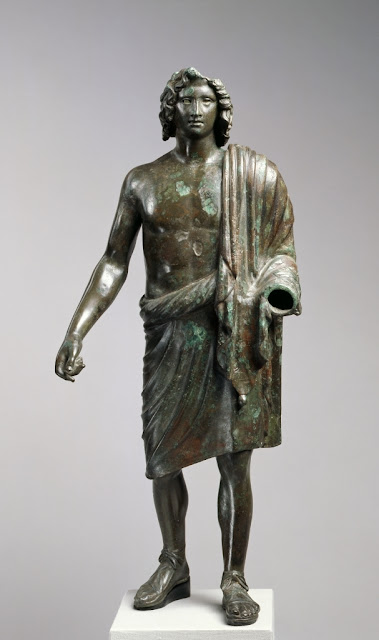Artifacts from ancient Egypt, the Near East, Greece, Rome, the Americas, Asia and Africa. Ongoing at the Michael C. Carlos Museum of Emory University in Atlanta, Georgia.
Artifacts from ancient Egypt, the Near East, Greece, Rome, the Americas, Asia and Africa. Ongoing at the Michael C. Carlos Museum of Emory University in Atlanta, Georgia.
Some 17,000 artifacts from ancient Egypt, the Near East, Greece, Rome, the Americas, Asia, and Africa, as well as works on paper from the Renaissance to the present day, provide visitors with a glimpse into the art and history of world cultures.
Image: Clothing and posture identify this 1st to 2nd century CE figure from Alexandria, Egypt as Hermanubis, a Greco-Egyptian deity who combines the essences of the Greek god Hermes with the Egyptian Anubis. The syncretism of Hermes and Anubis arises from the function of both deities to guide souls to the Underworld. Distinctive in the clothing of Hermanubis is a garment that wraps around the waist with a roll of cloth, with one end falling over the left shoulder. In his left hand he may have held a palm branch, while in his right the caduceus (herald's staff) of Hermes. On his head he wears the modius, a cone-like headdress. Key elements in the portraiture of Alexander the Great are also present on this statuette, in particular the thick, almost shoulder-length leonine hair, and the soft, idealized youthfulness. Alexander's physical traits were often used in the Hellenistic and Roman periods for representations of the gods. Courtesy of the Carlos Collection of Ancient Art at Emory University in Atlanta, Georgia.
Some 17,000 artifacts from ancient Egypt, the Near East, Greece, Rome, the Americas, Asia, and Africa, as well as works on paper from the Renaissance to the present day, provide visitors with a glimpse into the art and history of world cultures.
Image: Clothing and posture identify this 1st to 2nd century CE figure from Alexandria, Egypt as Hermanubis, a Greco-Egyptian deity who combines the essences of the Greek god Hermes with the Egyptian Anubis. The syncretism of Hermes and Anubis arises from the function of both deities to guide souls to the Underworld. Distinctive in the clothing of Hermanubis is a garment that wraps around the waist with a roll of cloth, with one end falling over the left shoulder. In his left hand he may have held a palm branch, while in his right the caduceus (herald's staff) of Hermes. On his head he wears the modius, a cone-like headdress. Key elements in the portraiture of Alexander the Great are also present on this statuette, in particular the thick, almost shoulder-length leonine hair, and the soft, idealized youthfulness. Alexander's physical traits were often used in the Hellenistic and Roman periods for representations of the gods. Courtesy of the Carlos Collection of Ancient Art at Emory University in Atlanta, Georgia.




Comments
Post a Comment